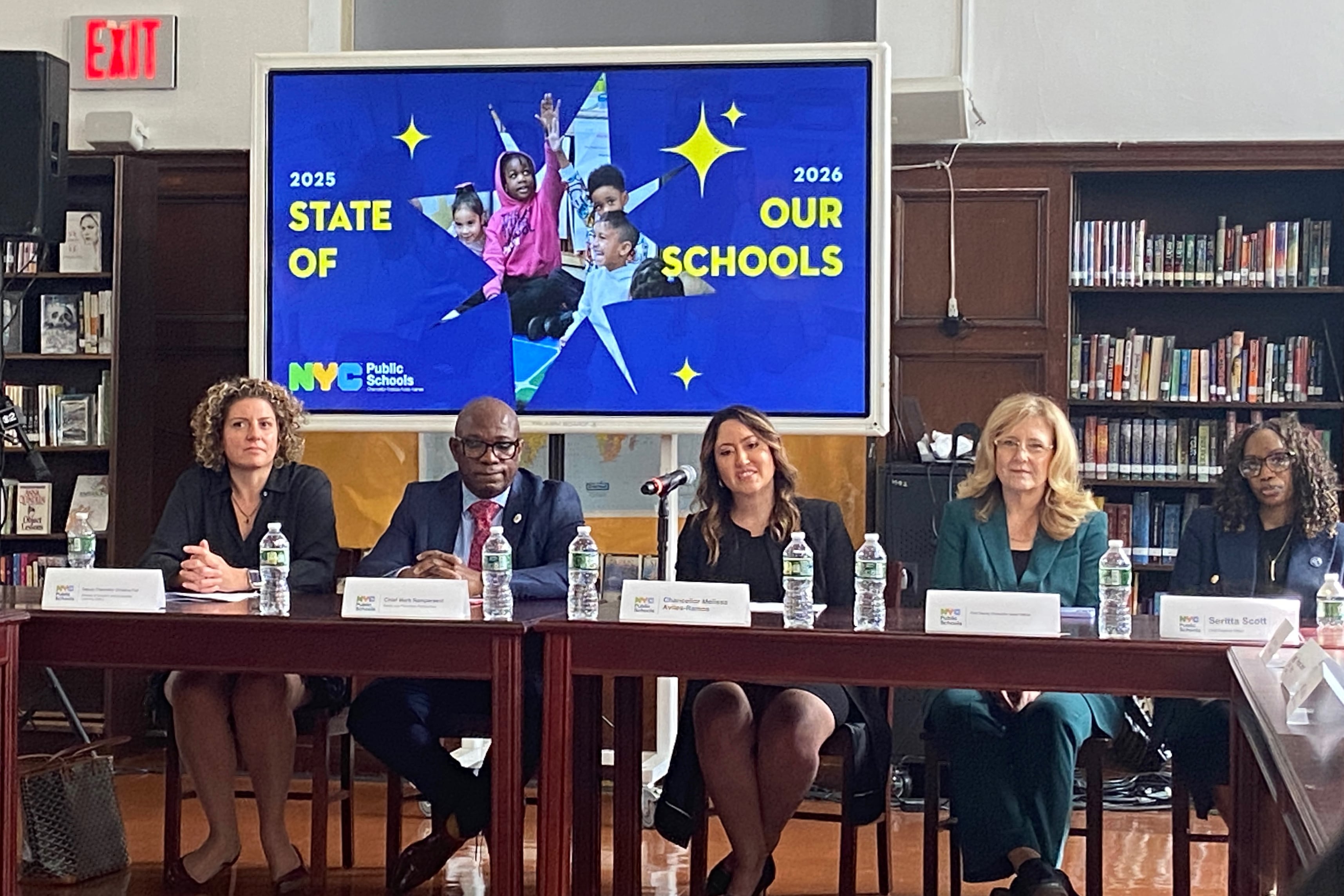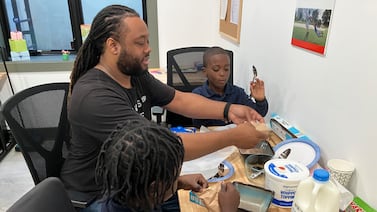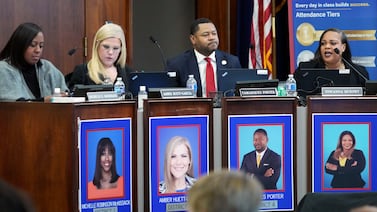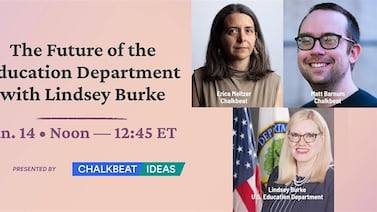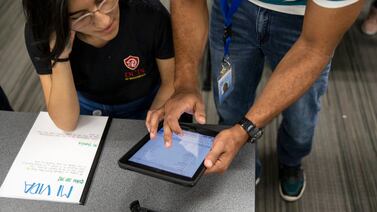Sign up for Chalkbeat New York’s free daily newsletter to get essential news about NYC’s public schools delivered to your inbox.
In her first “State of Our Schools” address Monday, Chancellor Melissa Aviles-Ramos gave an overview of how the Education Department is meeting families’ needs and announced a new accountability tool that breaks down a variety of initiatives, from the expansion of the NYC Reads curriculum mandate to chronic absenteeism rates per district.
The tool is divided into family engagement, teacher support, and student well-being, tracking 37 topics ranging from staff hiring updates and expanding autism programs to increasing voter turnout for the local Community Education Council elections.
“As your chancellor, I want us to operate differently. More openly,” Aviles-Ramos told the packed auditorium of administrators, elected officials, and parents at Manhattan Center for Science and Mathematics in East Harlem.
Aviles-Ramos, nearly one year into the position after David Banks abruptly resigned last fall, was stating her case for making the nation’s largest school system more transparent. Her address came just one day after Mayor Eric Adams announced he’s bowing out of the race, a development that could mean the city will see a new chancellor in a few months.
During the address, which included a thunderous marching band opening, students dancing to Bad Bunny, and a standing ovation for Aviles-Ramos, Adams’ absence quietly lingered. Aviles-Ramos thanked the mayor in her address but refused to answer questions related to his campaign’s end.
Some parents at the event said they were particularly pleased with the accountability tool. Manhattan mom Naomi Peña said it will tell families “what’s going on or not” at schools instead of making them wait for answers, allowing families to compare progress between the current school year with the year before.
For example, the dashboard shows NYC Solves, a city-approved math program under the Adams administration, went from being used at 512 schools last year to nearly 600 today. But three districts in the Bronx, Brooklyn, and Queens had one less school using the program compared to last year, according to the tool.
The new dashboard also revealed that 20% of schools have yet to hold school safety meetings, which they are mandated to do starting this fall. This school year, the city also launched anti-bullying and anti-vaping campaigns, charging students with leading the campaigns. So far, 95% of schools have worked on the initiative, the new tool showed.
“For as long as I am here and when I started I was very clear that my commitment remains to children, families, and educators,” Aviles-Ramos said.
Here are more takeaways from Aviles-Ramos’ speech:
NYC Reads turns to English language learners
The audience cheered for the announcement of the NYC Reads English Language Development curricula, a program designed to help improve literacy for students who are learning English as a new language. The program comes after this month’s audit from Comptroller Brad Lander, which found the city’s public schools routinely fail to provide instruction for English language learners.
Aviles-Ramos also highlighted an approved list of programs for educators to intervene if any student is struggling with reading that was launched earlier in the fall.
A new (but vague) AI framework
As in former chancellor Banks’ “State of Our Schools” speech last year, artificial intelligence was a hot topic. Banks had discussed using the technology to create “personalized learning plans for every child.” Aviles-Ramos said she is embracing AI with a four-part framework, the details of which would be shared later.
“We are preparing students for AI-powered lives and careers,” she said and mentioned that teachers and students will be taught how to use AI responsibly. The chancellor also said the DOE will use it for “operational and instructional efficiencies” and will “mitigate” bias and cultural responsiveness.
Expanding resources for unhoused students
Aviles-Ramos said she is expanding its “family connectors” program this fall, where over 2,000 adult volunteers signed up to connect with children and families across the school system to provide them with information on housing, food access, public benefits, and legal aid as way to boost attendance and academics.
A program that connects students in homeless shelters with school staffers — called “Every Child and Family is Known” — has expanded to 125 schools, up from 110 when it launched last school year.
Roughly 1 in 8 New York City students experienced homelessness last year, a record high. Through the “Every Child” program, there are over 850 adults supporting up to 4,000 students living in shelters, according to the dashboard.
When asked if the program was launched in response to the Democratic mayoral nominee Zohran Mamdani’s pitch for a similar program, Aviles-Ramos said, “This was in the works for a long time.”
The Education Department did not provide information on how volunteers are selected at the time of publishing but officials said an adult will check on with unhoused children daily and that it’s about “strengthening the bond between home and school.”
Correction: This story originally misstated the number of months Aviles-Ramos has been in her role. And the 2,000 volunteers through the “family connectors” program do not also work on the “Every Child and Family is Known” program.
Ananya Chetia is a reporting intern for Chalkbeat New York, covering NYC public schools. Contact Ananya achetia@chalkbeat.org.

